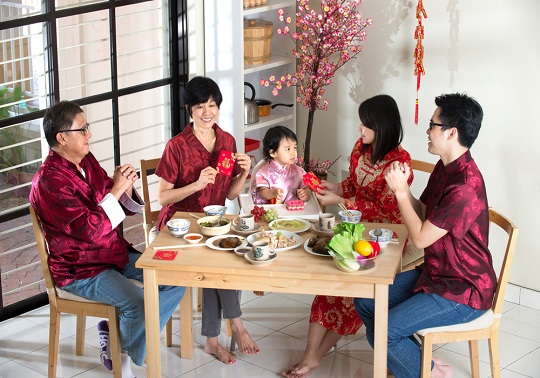Liaoning is the only province in China’s northeast which has a sea access. Currently, the province is one of the most important industrial and mining centres in China, but in the past it was the place where the Qing dynasty, the last of the feudal era, was born. Despite it is yet unknown for the majority of the international tourists who arrive to China, this province has a huge quantity of historical attractions and natural wonders.
13 december 2016

Dalian
Liaoning (辽宁) is a province rich in mineral resources. It is a key area for the communication and commercial and industrial development in northern China (东北, Dōngběi). This was the place were the Qing dynasty was born, the last dynasty of the feudal era.
The name ‘Liaoning’ means literally ‘peace in Liao’ regarding the Liao River, which crosses the province and flows into its costs. The province borders Inner Mongolia in the north, Jilin in the northeast, Hebei in the southeast and Yalu River (鸭绿江) in the east, becoming a natural border with the adjacent North Korea. The coasts on the south of the province are bathed by the waters of the Bo sea and the Yellow Sea. The imaginary line joining both seas and the Yalu River is known as the ‘golden triangle’ because of its economic importance. Liaoning is the only province of north-eastern China with a sea access.

The province is currently one of the most important industrial centres of China. In addition to that, its economy is supported by its rich natural iron, coal and manganese reserves. Jade, gold, diamond and sea salt sediments are also important. Its principal agricultural production is obtained out of peanut, apple and pear harvest.
Liaoning is China’s major tussah silk manufacturer. This type of silk is made by worms fed with oak leaves instead of the typical mulberry leaves.
It has a population of 43,910,000 inhabitants (2013). The majority of them are Hans and live together with other ethnic groups, such as the Manchu, the Mongolians or the Korean minority. Liaoning people are known in China by their sense of humour, their leadership and their supremacy in several sport disciplines at national and international level.

Relíquies històriques de la cultura Hongshan
History of the province
Since the 1970s, numerous archaeological sites have been discovered in this province, which have brought to light its fascinating past. In 1983, a team of Chinese archaeologists discovered the Goddess Temple (女神庙) in the Niuheliang Neolithic site (牛河梁), belonging to Hongshan culture (红山文化). The sanctuary, named after the facial sculpture of a woman with jade eyes, is one of the first sacrificial temples discovered in Northeast Asia. The so called “China’s Stonehenge”, as it has been baptised, provides a unique and very valuable source of study of the anthropology, archaeology and philosophy of the Chinese civilisation.
Throughout history, the strategic importance of this province caused fights among different tribes who wanted to take over it. Ming dynasty strengthened the Great Wall in this territory in order to stop invasions of the nomad tribes from the north, but it was in vain. At the beginning of the 18th century, the Manchu people arrived to Liaoning and established their capital in Shenyang before conquering the whole territory in China and going down in history as Qing dynasty.

The construction of the railway –a branch of the Trans-Siberian– during the Qing dynasty united the coastal city of Dalian with Changchun and Harbin, in the provinces of Jilin and Heilongjiang respectively. Along with a strong migration coming from the provinces of southern Liaoning, it caused an unprecedented economic growth. Since the 1950s, Liaoning stood out once again as one of the country's most industrialized provinces and its main cities became leading producing centres at the national level.

Shenyang
Shenyang: a dynasty and two emperors
Nowadays Shenyang (沈阳), the capital of Liaoning, is the cultural, economic, political, educational and industrial centre, not only in the province but also in all Northeast China. In 2008 it hosted some of the football matches that took place at the Beijing Olympics.
Strolling through Shenyang involves to be imbued with the history of its ancient streets. The city, which has 8,257,000 inhabitants (est. 2013), is located in the centre of the province.
In 1625 Nurhaci established here his capital and called it Mukden –Shengjing in Mandarin–, which in Manchu means ‘magnificent capital.’ When in 1644 the Manchú conquered Beijing and the Qing dynasty began, Shenyang became the secondary capital. Shenyang is known to be the ‘city where a dynasty and two emperors were born’, referring to the Qing lineage and its founders: Nurhaci and his son Huang Taiji. It is to them that we owe the construction of the Shenyang Imperial Palace, between 1625 and 1636. In 2004, this complex of incalculable historical value was included in the World Heritage List of Unesco, along with the tombs of the Qing dynasty. This boosted tourism in the province as never before.

Other places of interest that are worth visiting in the city are the bustling Zhongshan Square –especially at nightfall, when people take it up for dancing and chatting–, Taiyuan pedestrian street –the shopping area par excellence– or the Liaoning Provincial Museum. The latter, located in Heping district, has a large collection of objects dating to the Palaeolithic and Neolithic.
North of Shenyang there is the green lung of the city, Beiling Park, which covers an area of 3.300.000 m² and was built in 1927 surrounding Zhaoling, one of the three tombs of the Qing dynasty found in Shenyang.

Liaoning’s wonders
Although it is still unknown for many international tourists arriving in China, this province offers a wide range of historical attractions and natural wonders, among which we can highlight the seaport city Dalian (大连), Wunü Mountain city (五女山), Xingcheng walled city (兴城) and the Great Wall (长城).

The seaport city Dalian –located in the far south of the Liaodong peninsula– holds a curious record. Among the 50 squares in Dalian, Xinghai square (星海广场) is the biggest one in the world (1,760,000 m2). The square was unveiled in 1997 to commemorate the centenary of the city. Nicknamed as the “romantic city”, its biggest wonder is located in beaches like those in the Xinghai Bay –near the city centre–, the one in Bangchui Island –set in a natural landscape with cliffs and dense woods– or the one in Jinshi, a golden-sand beach hiding lots of millennial fossils.

Monte Wunü
220 km away from the southern of the capital, in the Huaren Manchu Autonomous County, we find one of the greatest historical treasures of Liaoning: Wunü Mountain city. In year 37 B.C., the already-vanished Koguryo culture established the first capital of the realm in this mountain. The selection of the place was determined by the orography, especially by the natural shield against potential invasions formed by the mountain’s cliffs.

Xingcheng

Xingcheng
On Liaodong Bay’s coast, there is one of the best kept walled cities in China: Xingcheng. Dating back to 1433, its walls are a unique example of a Ming dynasty’s fortified city. In the centre of the ancient city, there is the Drum Tower (鼓楼) and the Temple of Confucius (孔庙).

Ciudad del Monte Wunü
One of the goals of many people travelling to China is to visit the Great Wall. In Liaoning province there are several sections, highlighting Jiumenkou and Hushan sections. The first of them, Jiumenkou (九门口, literally ‘nine entrances’), is located in the border with Hebei province and it was build during the Ming dynasty, over the rests of the ancient wall of the Northern Qi dynasty (550-577). The name ‘Jiumenkou’ comes from its major attraction: the nine-arches bridge crossing the Jiu River, which was used to regulate the water flow, as each arch had wooden floodgates that opened and closed depending on the water content. The other section, Hushan (虎山, literally the ‘mountain of the tiger’) –in the Kuandian Manchu Autonomous County, border with North Korea– was discovered in the 1980s and was restored during the 1990s. Dating back to Ming dynasty, this section of the Great Wall is believed to having been built over older sections build by the Qin and the Han, whose territory reached what today belongs to North Korea.

Ciudad del Monte Wunü
Liao’s cuisine
The typical gastronomy of Liaoning (辽菜), which is included in the northeast cuisine, has a long history. Its flavours arise from fusion of different cultures and typical traditions of the province. On Liao’s tables, food is served in abundant quantities and it is characterised by its aroma and flavour. Some of the techniques used by this cuisine to elaborate its recipes are: to stew, to fry, to roast or to caramelize.
Some of the most renowned dishes are chicken stew with mushrooms (小 鸡 炖 蘑菇 ), stuffed rolls of Shenyang (沈 阳 回 头 ), Dangdong casserole (丹 东 焖 ) or salted fish with bagels (咸 鱼 饼子), typical of Dalian.

Jiumenkou
The history of the province has contributed significantly to form the Liao gastronomy. The "Manchu Han Imperial Feast" (满汉全席) was popularized during the time of the emperor Kangxi of the Qing dynasty. The purpose of this extravagant feast was the interethnic integration of Manchus and Hans through the fusion of both cuisines. This spread, which nowadays is rarely prepared, consisted of a variety of 108 dishes, of which 54 were typical of the north and 54 of the south. Formerly, because of the copiousness of the banquet, it took between one and three days to finish all the food.
A reportage by Carolina Navarro Plata. 罗悦柔. Revista Instituto Confucio. Número 35. Volumen II. Marzo de 2016.















